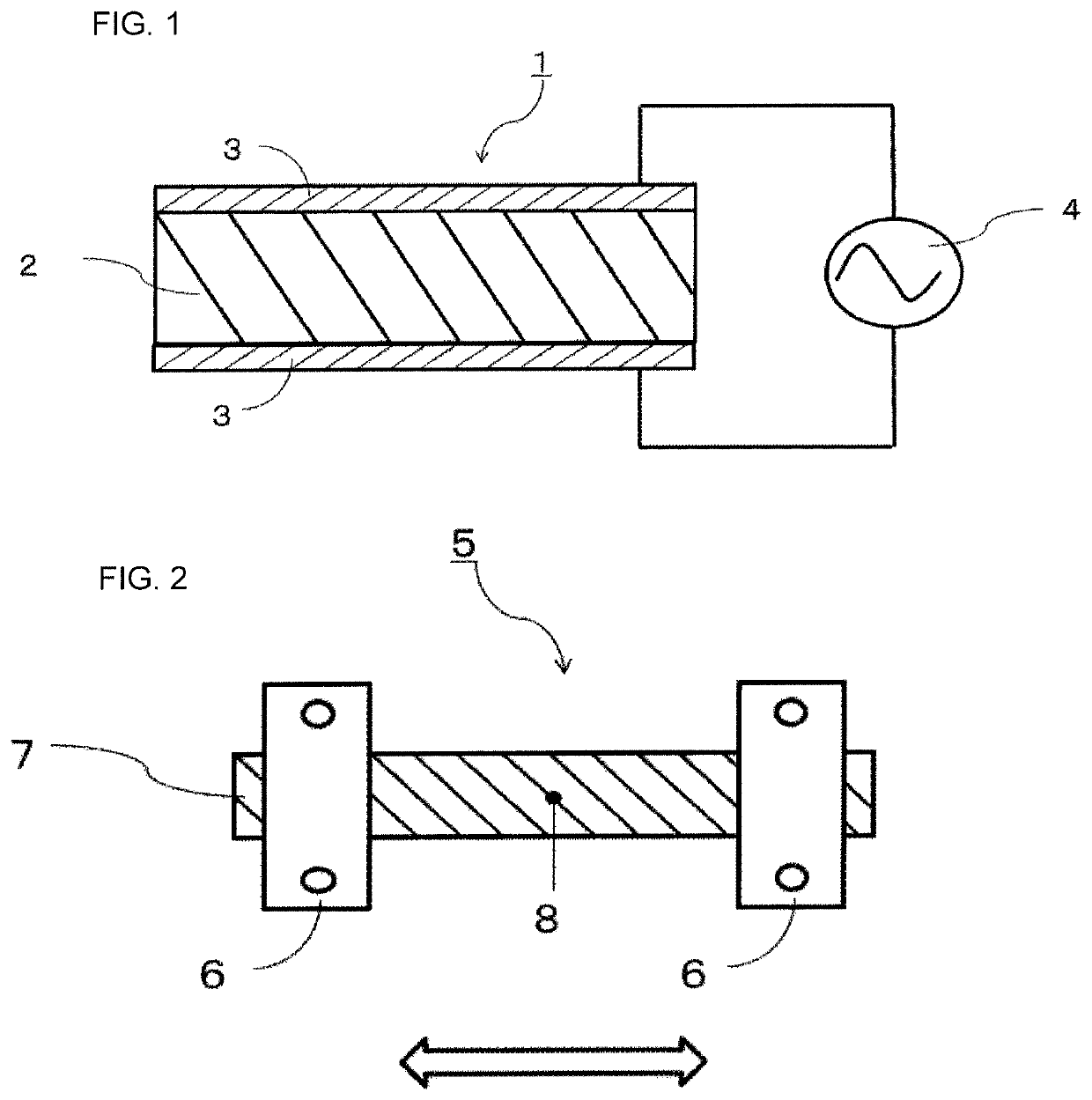Slurry for flexible electrodes, and flexible electrode using same
a flexible electrode and slurry technology, applied in the direction of electrically conductive paints, mechanical instruments, machines/engines, etc., can solve the problems of difficult coating, loss of conductivity, difficulty in obtaining a desired amount of displacement, etc., and achieve the effect of suppressing the electric resistance valu
- Summary
- Abstract
- Description
- Claims
- Application Information
AI Technical Summary
Benefits of technology
Problems solved by technology
Method used
Image
Examples
example 1
[0061]60.0 parts by mass of chloroprene emulsion 1 was weighed out and mixed with 40.0 parts by mass of carbon black B. 0.05 parts by mass of a dispersant for carbon black was added with respect to carbon black B. After adding water so that the mass % of the polymer component+component (a) in the slurry becomes 20 mass %, the mixture is dispersed using a rotation / revolution mixer (Awatori Rentaro ARV-310 manufactured by THINKY CORPORATION) and thus a slurry for flexible electrode was prepared. Then, on a chloroprene sheet having a thickness of 0.3 mm, the slurry for flexible electrode was coated so as to have a thickness of 30 μm, and dried at 100° C. for 30 minutes to produce a flexible electrode.
examples 2 to 24
, Comparative Examples 1 to 10
[0062]A slurry for a flexible electrode was prepared in the same manner as in Example 1 except that the types and mixing ratios of each component were changed as shown in Tables 1 to 8. Then, flexible electrodes were prepared in the same manner as in Example 1 using these flexible electrode slurries.
[0063]Using the flexible electrode slurry and the flexible electrode thus obtained, each characteristic was evaluated in accordance with the following criteria. These results are also shown in Tables 1 to 8 above.
[0064]The viscosity of each slurry for flexible electrode was measured using a cone-plate viscometer (MCR-300, manufactured by Anton Paar GmbH). The measurement conditions were as follows:
[0065]Measurement mode: shear mode
[0066]Shear rate: changed from 100 s−1 to 0.01 s−1
[0067]Measurement jig: cone plate (CP-50-2; diameter 50 mm, angle 2°, gap 0.045 mm)
[0068]Measurement temperature: 25° C.
PUM
| Property | Measurement | Unit |
|---|---|---|
| BET specific surface area | aaaaa | aaaaa |
| shear viscosity | aaaaa | aaaaa |
| median diameter D50 | aaaaa | aaaaa |
Abstract
Description
Claims
Application Information
 Login to View More
Login to View More - R&D
- Intellectual Property
- Life Sciences
- Materials
- Tech Scout
- Unparalleled Data Quality
- Higher Quality Content
- 60% Fewer Hallucinations
Browse by: Latest US Patents, China's latest patents, Technical Efficacy Thesaurus, Application Domain, Technology Topic, Popular Technical Reports.
© 2025 PatSnap. All rights reserved.Legal|Privacy policy|Modern Slavery Act Transparency Statement|Sitemap|About US| Contact US: help@patsnap.com

